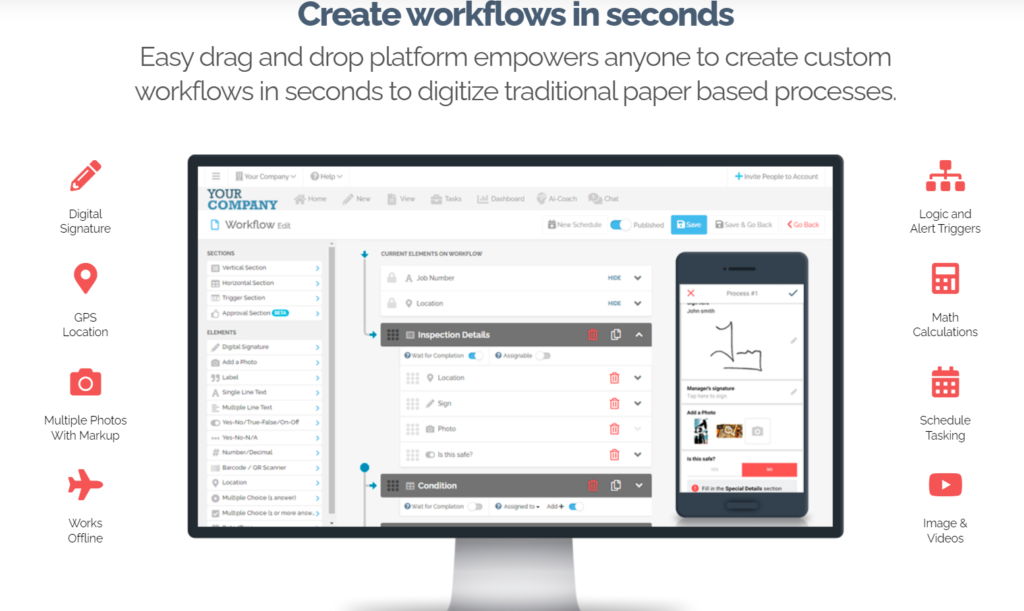As the world of manufacturing continues to evolve, so does the need for efficient and effective maintenance strategies. One such strategy that has gained significant traction in recent years is predictive maintenance. This approach, powered by data and technology, is transforming the way businesses operate, leading to increased efficiency, reduced costs, and maximized equipment life.
In this context, FAT FINGER, a digital workflow procedure builder, plays a pivotal role by empowering front-line teams to do their work correctly every time. With features like Drag & Drop Workflow Builder, Mobile & Desktop Workflows, Dashboards, Integrations, Augmented Reality, Connect IoT Devices, and Artificial Intelligence Coaching, FAT FINGER allows you to build predictive maintenance digital workflows to ensure problems are gone even before they start.
Request a demo to see how FAT FINGER can revolutionize your maintenance strategy.
Best Practices in Predictive Maintenance

1. Regular Data Collection
Regular data collection is the backbone of any successful predictive maintenance strategy. This involves monitoring and recording the performance of various equipment components over time. The collected data can then be analyzed to identify patterns and predict potential failures.
2. Use of Advanced Analytics
Advanced analytics, including machine learning and AI, can be used to analyze the collected data and make accurate predictions about equipment failure. These technologies can identify subtle patterns in the data that may be missed by human analysis.
3. Training and Skill Development
Implementing predictive maintenance requires a certain level of technical expertise. Therefore, it is crucial to invest in training and skill development for your maintenance team. This will ensure that they are equipped to handle the complexities of predictive maintenance.
4. Integration with Existing Systems
Predictive maintenance should not operate in isolation. Instead, it should be integrated with existing systems and processes to ensure seamless operation. This includes integration with inventory management systems, work order management systems, and more.
Maximizing Equipment Life with Predictive Maintenance

By implementing predictive maintenance, businesses can significantly extend the life of their equipment. This is because predictive maintenance allows for timely maintenance, which prevents minor issues from escalating into major problems that can cause equipment failure. Furthermore, predictive maintenance reduces the likelihood of unexpected equipment breakdowns, which can lead to costly downtime.
Conclusion
Predictive maintenance is a powerful tool that can help businesses maximize equipment life, reduce costs, and improve efficiency. By implementing the best practices outlined in this article, businesses can make the most of this innovative approach to maintenance.
Ready to take your maintenance strategy to the next level? Create a predictive maintenance workflow for free on FAT FINGER or schedule a demo today.
Discover the best practices in predictive maintenance to maximize your equipment life. Learn how to optimize your operations and reduce downtime. Don’t wait, Schedule a Demo today!


